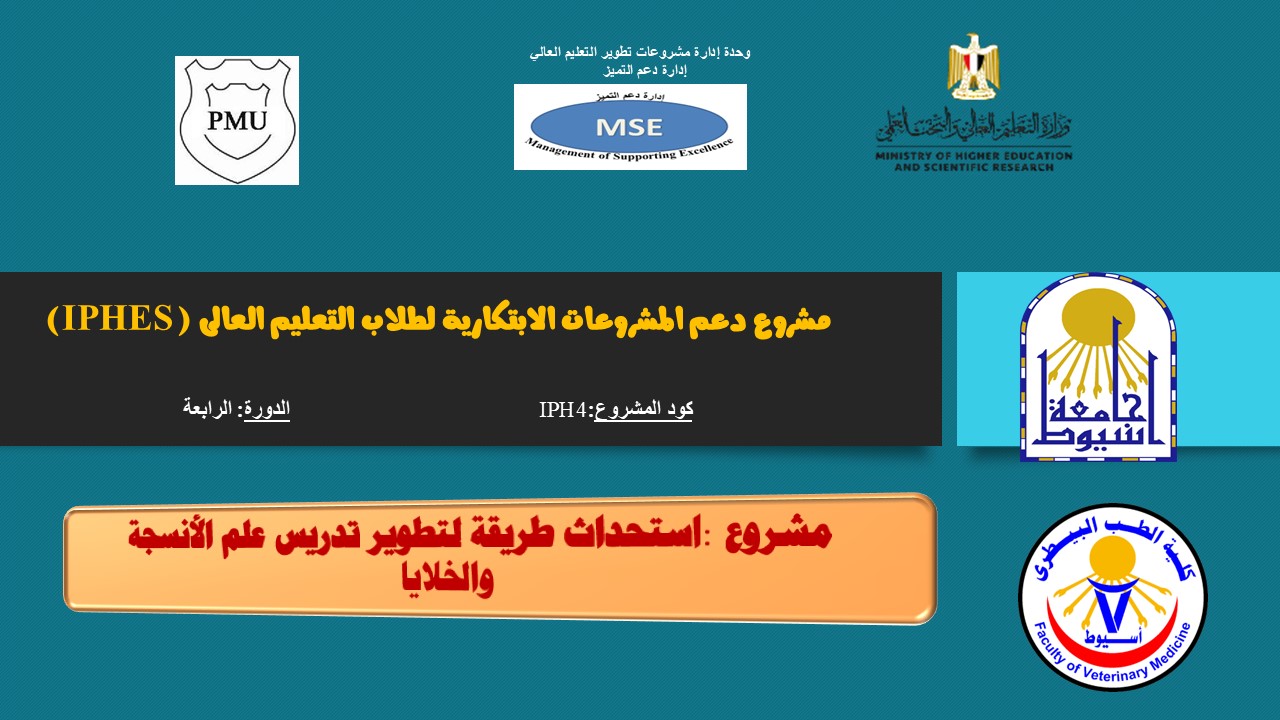
Project name: Innovating a modern method for developing the teaching of histology and cytology.
Project description: Innovating a new method of manufacturing 3D models. The student can see it with his naked eye and touch it with his hands. Each model represents the structure of the cells that make up the animal body, as well as a cross section in each organ in the animal body, for example, but not limited to (the histological structure of animal cells / histological structure of liver cells / histological structure of tongue cells / histological structure of cornea cells / histological structure of taste buds). / Histological structure of intestinal cells / Histological structure of bone cells.
The current situation: The study of histology and cells of the different tissues of the body depends on the use of a light microscope or by displaying two-dimensional slides on the data show, and it displays the image of the tissue that makes up the different parts of the body in a two-dimensional form, which makes it difficult for the student to imagine the shape and structure of the tissue inside the animal’s body.
Methodology: These models are sold over the Internet at over prices and are bought in foreign currency. They are very useful to facilitate the educational process and make it distinctive, of high quality and efficiency.
In this project, the student implements such models using local raw materials (a few expensive) that depend on the use of expressive and technical skills of students and the implementation of these models and their use to simplify the explanation of public and private histology
This is a new method and has not been used before in any of the Egyptian universities.
The work methodology depends on making a time table for the project, in which the project manager, the executive team and the administrative team participate, where a group of students:-
1- Uploading images of models via the Internet, printing and enlarging them
2- Making a model using wood, foam and sculpting tools
3- Color the model as shown in the colored printed pictures.
This is done under the supervision of the faculty members and the supporting staff participating in the project and the follow-up of the students to obtain a three-dimensional model that contains details based on correct scientific base as they exist inside the animal’s body.
Results:-
1- Improving students and then graduates to graduate a distinguished, scientifically and clinically qualified veterinarian capable of creativity and innovation.
2- Developing the spirit of creativity and innovation, weighing student talents, and encouraging them to prepare distinguished small projects to be a nucleus for large practical projects that contribute to supporting the national economy in accordance with Egypt’s 2030 vision.
3- An innovative way to study cytology and histology, for example, but not limited to (the histological structure of liver cells, the histological structure of tongue cells, the histological structure of intestine cells, the histological structure of corneal cells, the histological structure of bone cells).
4- These models are placed in glass cupboards inside the department's anatomy and histology museums, where they are available for students to study and understand the tissue structure of most of the body's organs.
Effect: Increasing the achievement ability of students which delivering information to them in an innovative way. Make the students able to achieve and visualize the structure of the different body tissues that have been studied
Project Team
Head of the project (Dean of the Faculty): Prof. Madeha Hosny Ahmed Darwish
Project Advisor: Dr. Manal Tawfiq Hussein
Project Team (Students):
- Roland Mohamed Hosni
- Esraa Mohamed Sami
- Asma Hamada Sobhy
- Mayada Muhammad Khalaf
- Manar Mahmoud Saber


